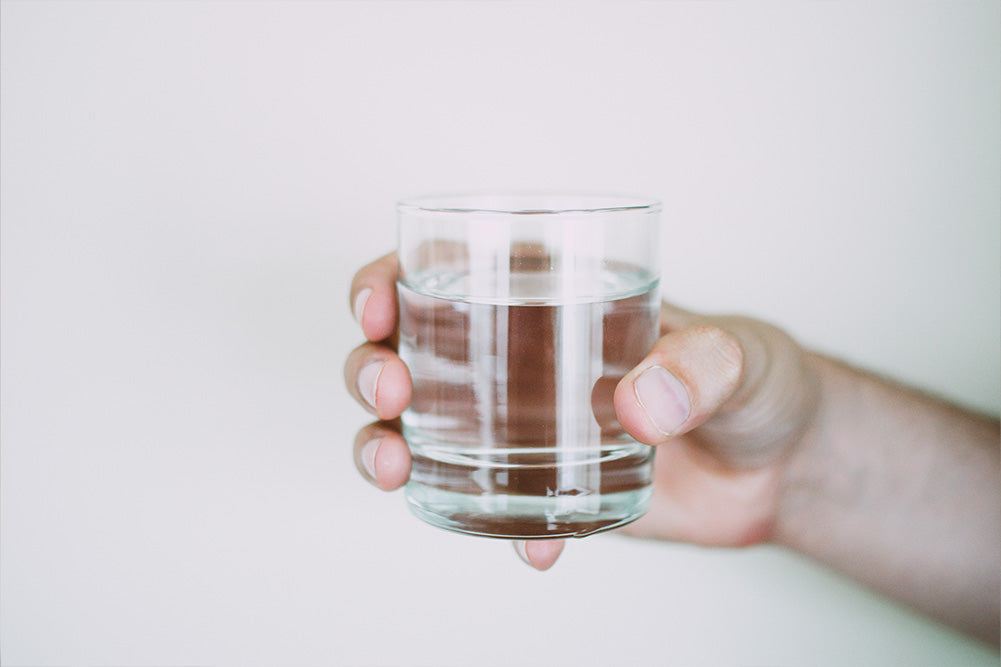Your Cart is Empty
June 05, 2023 4 min read

Stories of water contamination are not uncommon in the United States and around the world. Images of orange water in Flint, Michigan, for example, have been haunting the minds of Americans for nearly a decade, and this is not an isolated case. Because water contamination is not always visible to the naked eye, it is crucial that you take the necessary precautions to ensure your water is safe to consume. Chromium 6, for example, is a contaminant that may go unnoticed in water, but it can have deadly results if consumed.
Chromium 6 is an element most famously known as the “Erin Brockovich” chemical, based on the movie starring Julia Roberts. The film follows the true story of Hinkley, a small town in California that was affected by a chromium 6 leak. Chromium 6 is a chemical “produced by industrial processes… [It is] used in electroplating, stainless steel production, leather tanning, textile manufacturing and wood preservation” (1). In the case of Hinkley, this chemical was leaked from a gas compressor station into a pond, where it eventually seeped into the groundwater and the town’s water supply. From there, the town consumed the contaminated water, unaware of the leak. Subsequent health effects inevitably followed (2). The leak contaminated not only the original contamination site, but it stretched several miles farther, reminding surrounding areas that they are not safe from contaminants, either.
While the film made chromium 6 famous, it is not the only time in American history where a chromium 6 contamination occurred. Over 218 million Americans unknowingly drink tap water that is contaminated with chromium 6 (1). However, the government never set a legal limit for chromium 6 in drinking water, so it remains unregulated, despite various leakages into drinking water supplies. In 2019, for example, a chromium leak resulted in a green ooze seeping onto I-696 in Michigan. Again in 2022, chromium was released into the Huron River from a sewage treatment facility, contaminating tap water originating from the Huron River system (3). With the pattern of chromium 6 contamination continuing to this day, it is important to know the health effects of the chemical, as well as how to stop it from contaminating your water.
The man-made element of chromium 6 is connected to a variety of health effects, some that are deadly. For example, chromium 6 particles are known to cause cancer of both the lung and the stomach (1). Additionally, after further investigation, OSHA notes that chromium 6 exposure may cause, “asthma, eye irritation and damage, perforated eardrums, respiratory irritation, [and] kidney damage,” as well (4). In some cases, chromium 6 may cause skin burns, pneumonia, and complications during childbirth (5). It is also thought to damage reproductive systems and the liver.
Knowing the health effects of chromium 6 makes the question of how to remove it even more prevalent. While there are multiple ways to remove chromium 6, the cheapest, and most effective way to remove it is through filtration. Investing in a water filter will filter out harmful contaminants, including chromium 6, depending on the filter. For a filter that does it all, Seychelle is the obvious answer. Seychelle water filters remove up to 99% of chromium 6 in drinking water, as well as 99.99% of aesthetic, chemical, inorganic, and radiological contaminants.
Other options for removing chromium include distillation and reverse osmosis. Distillation can also remove chromium 6, but it is very expensive and energy-intensive. Distilling water also removes both unhealthy and healthy minerals alike from the water, so beneficial minerals that the body needs are also removed during this process. Reverse osmosis is another option for removing chromium 6, however these machines are quite expensive and heavy. They are not portable, so they cannot move with you. Similar to distilling the water, reverse osmosis machines filter out healthy minerals as well, unless a remineralization module is added to the machine for an extra cost.
Chromium 6, while not typically found in nature, finds a way time and time again of sneaking into tap water across America, bringing with it deadly side effects. Consumption of the contaminant can result in forms of cancer, liver damage, and other malignant effects on the body. To avoid these outcomes, it is important that you are aware of methods to remove chromium 6 from your water. Expensive methods like distillation and reverse osmosis are effective, but there is a simpler solution. Investing in a water filter, like a Seychelle water pitcher, is a cost-effective method to protecting yourself from chromium 6.
What is chromium 6?
Chromium 6 is a chemical that is often produced from industrial processes, although on rare occasions it does occur naturally.
Can you filter out chromium 6?
Yes, chromium 6 can be filtered out by a water filter, reverse osmosis machine, or through the process of distillation.
How do you filter chromium 6 out of water?
The easiest way to filter chromium 6 out of water is through a water filter. For the most advanced water filter of its kind, try a Seychelle radiological water pitcher, which is lab-tested to remove 99% of chromium 6 of any water source (not including salt water.)
Works Cited